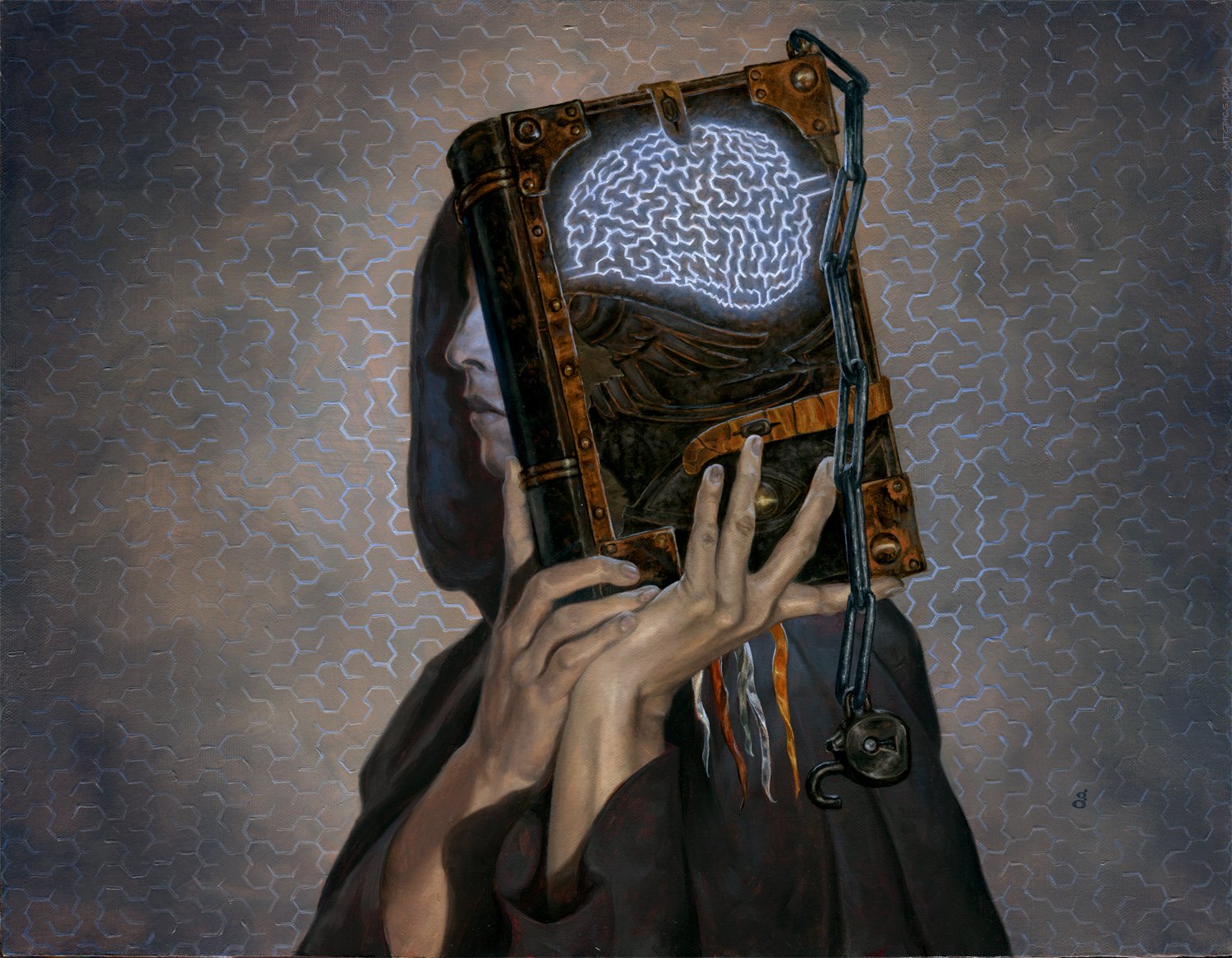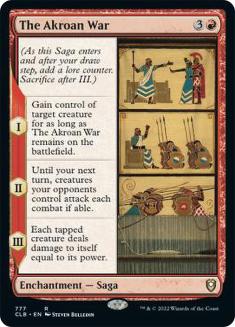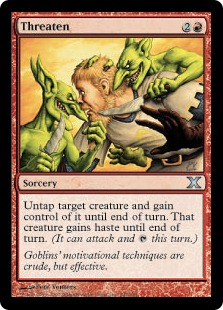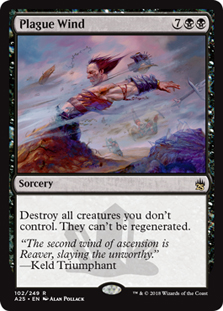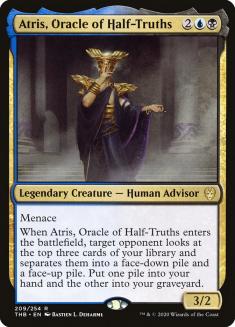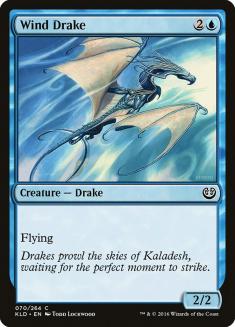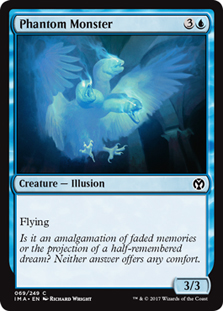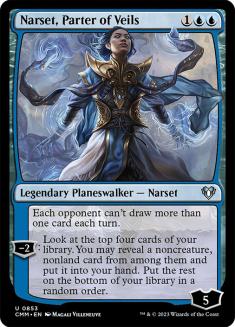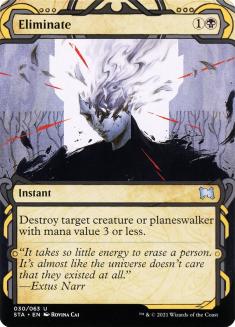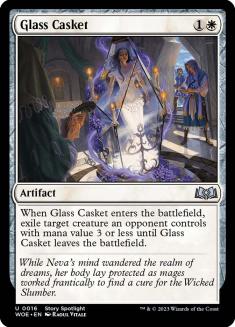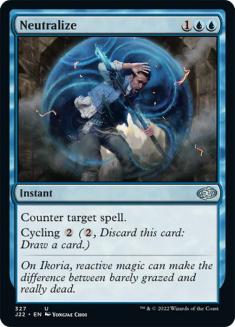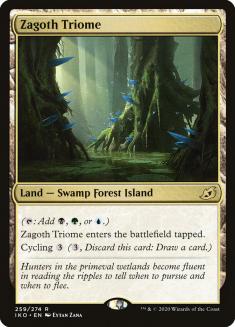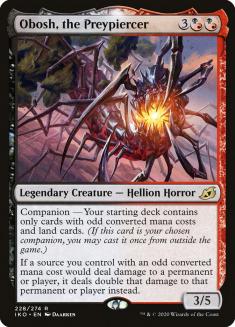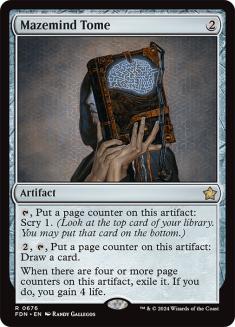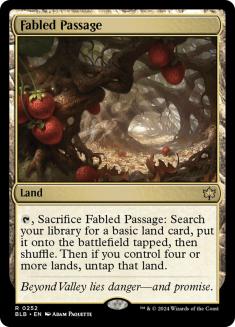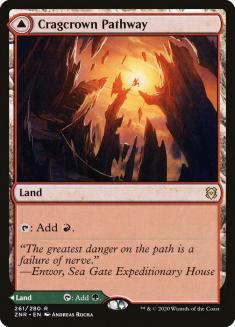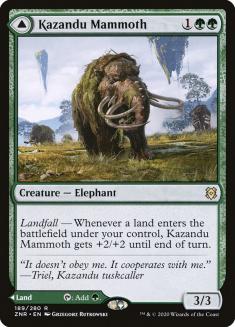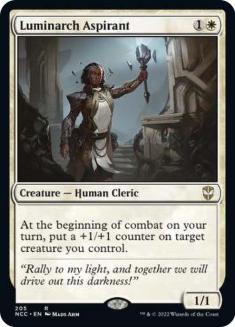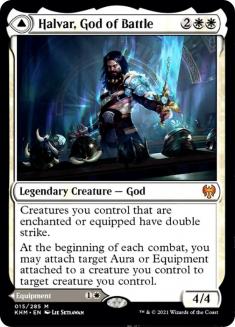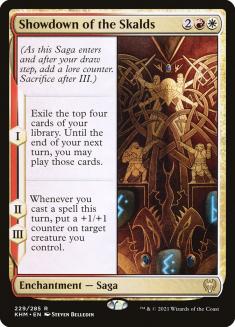A lot of people have talked about power creep when it comes to Magic design in the post-War of the Spark era, but just as important is complexity creep. Cards just have way more text, to the point that Wizards of the Coast (WotC) had to create a task force to reduce word count in a set last year.
You want to know why you see the same players at the top of every SCG Tour Online event these days? Playing Magic got way tougher.
From this past year of complexity, here is some of my best advice for playing the most difficult cards of the lot.
Theros Beyond Death
The right way to play Uro, Titan of Nature’s Wrath is to put it in your deck if it is legal. I’m not going to waste anyone’s time with more details, because I assume that problem will be resolved shortly. You can even resolve it yourself by not playing the formats where Uro is still allowed!
Okay, now it’s serious content time. I probably don’t have many more chances to take a shot at Uro; I’ve got to take them while I still can.
The Akroan War has become a fixture of Gruul Adventures mirrors these days. Autumn Burchett wrote a bit about the typical patterns where it breaks a battlefield stall or allows a player who is ahead to crush the other player, but there’s a lot of depth as you flip through the unique chapters. It’s really easy to just cast The Akroan War and have it not do much, but hard to figure out what set it up to wreck you when your opponents cast it.
When you’re on the offense with The Akroan War, there are actually two cases for the second turn. In the best-case scenario, your opponent is dead or near-dead on the turn the second chapter occurs, usually because you have Embercleave or because they stumbled.
The more reasonable case is where you’re ahead, but in the sense of turn parity. You were on the play, so when you cast The Akroan War it was a big swing and they could potentially make a play to partly stabilize.
In that scenario, it is often correct to not attack on the second-chapter turn. Your opponent will be forced to attack with everything the next turn, so attacking gives them the choice of how to block and trade rather than giving you that choice. This is especially true if you can block and trade off the creature you stole, and really true if attacking means they can block off all their 1/1s, leaving a Lovestruck Beast unable to attack.
Your opponent also gets back the thing that you stole untapped when the third chapter goes off. Since the aggressive plan often leads you to take the biggest thing possible, in the “one turn ahead” scenarios you often want to time your The Akroan War to kill them on the second swing. Otherwise they will have their big thing returned plus whatever they cast that turn to stabilize, which is often enough.
In the more stalled-out or defensive scenarios, if your opponent has two untapped creatures it is often better to take the smaller of the two. When your opponent is forced to attack later, you will be able to chump block with that creature before The Akroan War mops up the rest. Again, just make sure you aren’t taking their only 1/1 and letting Lovestruck Beast chill.
In these stalled-out spots, even if the Threaten effect opens up good attacks this first turn, you should consider holding back a bit. Since your opponent has to attack with everything later, their best play is usually also attacking with everything now. If you could lose a two-turn race if everything went wrong, but really can’t lose if the third chapter rolls around, just play to the Plague Wind and move on.
If they just have one untapped thing to choose from, that’s a different scenario. Usually that means you’re behind, they’re attacking you, and honestly you should get what you can from The Akroan War without dying. It does help that usually if the thing they control is bigger than everything else and can’t be traded off in the alpha strike, it’s a Lovestruck Beast and all the 1/1s are going to die anyway.
There’s a lot of levelling that could occur with Atris, Oracle of Half-Truths, but it’s honestly not worth thinking about. Putting an opponent on Magic Arena on a given level is nearly impossible in a single match.
My only tip here is that, all things being equal and the game not coming down to finding a specific card, the two card pile will be way more attractive whether it is face-up or face-down. Imagine you can’t beat an Ugin, the Spirit Dragon and your Dimir opponent’s Atris shows you Eliminate, Neutralize, and a land. Something silly like Eliminate and Neutralize face up, land face down probably won’t trick your opponent because Eliminate plus Neutralize plus a resolved Atris is probably good enough to win the game anyway. Unless their options were “already hit the Ugin or die,” these mystery box-style splits aren’t good.
Ikoria: Lair of Behemoths
Shark Typhoon started off its run as a dominant force in Standard. From Jeskai Lukka to Temur Reclamation to Sultai Midrange, Shark Typhoon was a prominent fixture of Standard from Ikoria to rotation.
Then Uro got ejected from the format and everyone realized Shark Typhoon was more a high-impact tool for the stack-interactive, mono-mirror formats that had lasted through six months and about as many ban cycles.
Shark Typhoon mirrors are a tricky subject. The exact right time to pull the trigger on making a Shark can be daunting, since each turn you wait means you might catch your opponent having made a smaller Shark first.
One easy situation on when to move is that sometimes you just need a land. If your sixth land is a key mana count in an upcoming counterspell fight, you’re cycling Shark Typhoon for a 3/3, no questions asked.
Another is a mana disparity. My rule of thumb is if my opponent has fallen behind on mana, it’s hard to be wrong about sitting with Negate up and then making your max-size Shark if they do nothing. Ideally you want to be getting in two attacks before they can trade, but a single-mana split often does that.
Imagine you have six mana to your opponent’s five mana on their end step. You make a 4/4 Shark, it gets to attack, and even if they hit a sixth land next turn, they would need to tap their mana in your combat step to also make a 4/4 Shark. From there you have a second main phase to easily take over the game.
The last main question is when you want to start a fight. Your opponent isn’t always going to have a Shark Typhoon, or even another land, so making the first Shark puts your opponent on the spot of doing the next thing. Sometimes that removal happens at instant speed and the game cleanly proceeds, but sometimes that’s a sorcery-speed kill spell you can exploit on your following turn.
Overall this leads to a lot of cycling Shark Typhoon and not a lot of holding it, making it look like you just take that action whenever you can. But you should have a reason that guides your decision and gameplan before you cycle it.
In general, a 2/2 Shark won’t clock someone’s life total swiftly enough to matter. A 3/3 isn’t an impending death, but it adds up quickly and means a second Shark Typhoon at any point is an urgent issue.
Double-block math starts to really look good for Shark Typhoon once you hit 3/3. This is just the natural progression of number and land drops, but if you make a 3/3 Shark and they make a 4/4, 5/5, or even 6/6, it’s relatively easy to still trade Shark-for-Shark if you find a second Typhoon and double block. Compare to a 2/2 in those spots and you can see how much easier it is to get away from the double block with a token if you wait for that one size up. Sure, they might hit a 7/7 Shark later, but even with control-mirror-level card draw, a ninth land is a ways off.
So unless you really need that fifth land, try to hold out for the 3/3 Shark.
On the flip side of this, if your opponent could have made a 3/3 Shark and didn’t, that’s a good sign they don’t have Shark Typhoon.
One reason that 3/3 number may shift is to beat a planeswalker. This was mostly how Narset, Parter of Veils fights worked in the previous Standard. A 2/2 Shark meant your opponent tapping low for a Narset would be a single -2 activation, so even a small Shark matters in Sultai Midrange mirrors. With Nissa, Who Shakes the World, the key numbers were 4/4 to both hold off the land and kill Nissa in two attacks, or even better a 6/6 so Nissa couldn’t really be cast.
If you have spent mana on any other thing during a Shark Typhoon mirror turn cycle, you should lean towards holding the Shark Typhoon. Negate on a planeswalker then cycling Shark Typhoon is just putting yourself in the spot of having a mana disparity that I described earlier.
In the face of removal, sizing your Shark Typhoon is going to be really obvious or not matter at all. Don’t run a Shark token into a Stomp, but if it would die to Eliminate or disappear on a Petty Theft (ignore the 3/1 body on Brazen Borrower for now), that’s going to happen regardless of size and you should just play the Shark sizing battle.
In some matchups where your opponent is heavy on sorcery-speed removal but low on instant interaction, your desired Shark Typhoon number goes way up. Rather than relying on chipping in with a 3/3 Shark, you need to assume each Shark only gets one attack in and treat the card like a Fireball.
If Patrick Sullivan has tricked you into playing the Locthwain Serpent Dimir Control deck in Zendikar Rising Standard, this is how you should be approaching matchups like Esper Doom Foretold. You have five or six flash creatures in your deck that can probably get in one hit before they die. With lifegain, you need to deal 26 or so damage for lethal. If your Sharks aren’t 6/6 or larger, you’ll have to do something stupid like Neutralize a Glass Casket.
Neutralize and Triomes are great cards, but they might be even better if you could only cycle them under the pre-Paris mulligan rules: all lands, no lands, or you keep it as-is.
I usually see people getting Neutralize right, but if you aren’t desperate for a land or something that impacts the battlefield, it’s hard to imagine a better card in hand than a counterspell.
With Triomes, I see a lot more of people cycling them just because. Or, worse, holding them with the thought that maybe they could cycle them in the future, and then realizing they are a mana short later without having cycled or played the land. The very nature of Triomes as curve-slowing multicolor promoters means the decks that play them want more mana, and I don’t just mean the ones with Hydroid Krasis. When was the last time a Jeskai deck was sad to have seven mana, especially when Raugrin Triome leads to untapped Castle Ardenvale and Castle Vantress?
Like I said, the situation I see people getting into the most trouble is electing to not play a Triome thinking they might cycle it, followed by wanting to keep making land drops. That means skipping a land drop, or just playing another land when it makes no difference whether your land drop is tapped or untapped. Unless you’re literally cycling the Triome right now and are sure to have the three open mana, or it’s the nightmare case where you have nothing and know you need to take every chance to dig to something, you really should consider just playing it.
On the flip side of this talk of not using a mechanic, any time where picking up a companion could be a reasonable play early is a great time to do it. This usually presents itself with Yorion, Sky Nomad versus the option of casting some nonsense like Golden Egg Turn 3, but Obosh, the Preypiercer has its moments here too.
You can think of this in simple metrics. In Magic, it is always more profitable to split your costs up than pay in one chunk. Paying eight mana at once for Yorion is a single option. Paying three now and five later gives you a lot more choices.
You shouldn’t be skipping traction-relevant plays to do this, but really consider the value of your Turn 3 or Turn 4 relative to having companion cast options on Turn 5 through Turn 7. Plus, it’s not like half the cards in your average Yorion deck even do anything when cast. You can fill up the battlefield with garbage later, or sacrifice your first Omen to Doom Foretold and then cast the second.
One exception is if you know the game is going long and are concerned about Thoughtseize-style disruption. This is mostly a Modern Lurrus of the Dream-Den consideration.
Another exception is on the draw with Yorion, since your Turn 2 play tends to replace itself and an extra card on Turn 3 means a discard step is incoming.
Core Set 2021
The good part of Mazemind Tome is drawing cards, not scrying. You aren’t legally obligated to take game actions; you can just not activate Mazemind Tome in the mid-game and get the card later.
If you’re going to miss a land drop and are casting things to not die, scry away. Similarly, if you’ll be taking other game actions and will need that four-life cash-out soon, scry away. If you need to find Ugin, the Spirit Dragon and can only scry on your upkeep while keeping eight mana up, scry away.
But if you’re just sitting there wondering what to do with your Tome, wait and get more cards. If you have seven cards in hand and a solid life total, still wait and get more cards.
This is kinda cheating because Fabled Passage is a 2019 card reprinted into 2020 without any change in Standard legality or rotation time, but just remember you’re allowed to play a Fabled Passage before Turn 4 even if you have four lands. Sometimes you gotta hit the right colors on Turn 2 and Turn 3, and if you aren’t using your mana on Turn 1, that’s when you Fabled Passage to make it all work out.
Zendikar Rising
It was obvious from the start the most complex cards in Zendikar Rising were going to be the modal DFCs.
Fortunately with Pathways, the answer is simple. You want to play them at the last moment possible. You’re making a committal decision, but that decision is free whether you make it now or later. Usually that last moment is when you want to spend that color of mana, or when you need double of a color the next turn with two Pathways, or just when it’s your last land to play and you need to make any decision, but just don’t make the decision before you need to.
Kazandu Valley is still a land later in the game. It doesn’t have to be a Kazandu Mammoth.
See my comments on Triomes, only this time I’m guilty of doing this a lot. You want to cast Kazandu Mammoth on Turn 3 when you’re on the play if you’re set on your fourth land drop and green source count, but it’s way too easy in the mid-game to see “oh, another spell” and not think about just playing the land. When you’re missing your fifth or sixth land drop with a Kazandu Mammoth and other spells in hand, just make the land drop and play more spells in less time later.
This is super-true if you already control a Kazandu Mammoth. A 5/5 now is often worth more than some 3/3s later.
Luminarch Aspirant has been surprisingly successful in formats beyond Standard, including Modern and Vintage Cube, and it’s just as surprisingly complicated to play no matter what format you find it in. The card is all about predicting combat math.
I don’t have any catch-all heuristics, just questions to ask yourself.
- Question 1: What is my clock? You literally have to do the addition each time, but do you need to put the +1/+1 counter on something that can attack this turn to add up to lethal damage?
- Question 2: Is there some removal spell I need to size my way out of? Or even just a blocker, like wanting two 3/3s rather than a 4/4 and a 2/2 against a potential Soaring Thought-Thief?
- Question 3: Do I have something like Maul of the Skyclaves that makes a single large creature a unique threat, or do I just want the damage spread to shove a bunch of small creatures through a large blocker?
Kaldheim and Beyond
Things aren’t going to get simpler or easier any time soon. We have another set of modal DFCs and another set of Sagas, and we aren’t even playing it easy with a core set in 2021.
For 2021, make it your Magic resolution to think more about how you should play all your cards every game. In a world of open decklists and rapid information spread, it might be the biggest edge you can get.

